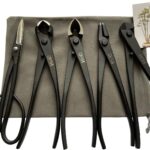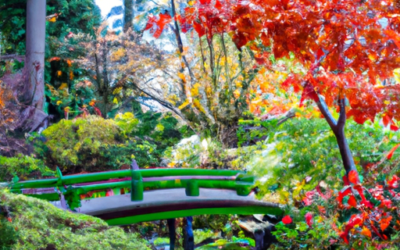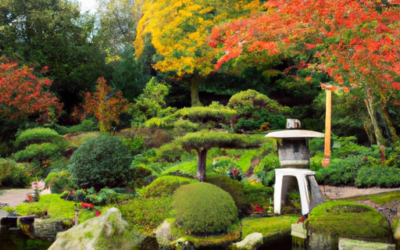Step into a world of serenity right in the heart of Europe as you immerse yourself in the singular magic of the largest Japanese garden in Hasselt, Belgium. Basking in vibrant hues during the fall season, this extraordinary garden stretches over an expansive 2.5 hectares—a fingertip touch of Eastern tranquility in Western landscapes. The heart initiative of this place is to acquaint visitors far and wide with the sublime and nuanced beauty of Japanese culture. It boasts a magnificent display of various tree species, alluring shrubs and eclectically diverse flora that, along with the symphony of cascading waterfalls and the tranquil melody of the peace bell, embody the Japanese concept of ‘Mugen’ or ‘Infinity’. Ensuring authenticity, the garden reverberates with a story of friendship that interlinks the cities of Itami, Japan, and Hasselt since 1985, and offers you a medley of impressions, ranging from the visual spectacle of the Chrysanthemum Festival to the existential tranquility of the iris pond. So, with every visit to the largest Japanese Garden in Europe, you can uncover a new layer of cultural understanding and bask in the exquisite intermingling of the sublimely natural, culturally distinct, and the spiritually overwhelming.
Overview of the Japanese Garden in Hasselt, Belgium
In the heart of the Belgian city of Hasselt, you’ll find a tranquil haven, harboring a piece of Japan: the largest Japanese Garden in Europe. Fanning across an impressive 2.5 hectares, this cultural gem not only fascinates with its aesthetic appeal but also invites you to immerse yourself in Japanese tradition and spirit.
The Importance of the Japanese Garden in Hasselt
As a resident or tourist in Belgium, you’re sure to be charmed by the rich Belgian culture. That said, a visit to the Japanese Garden offers a refreshing shift as you experience the unique, serene, and harmonious Japanese culture. This space is invitingly monumental, embracing everyone who seeks peace, tranquility, or simply a touch of the exotic far east.
Role of the Garden in Promoting Japanese Culture
The Japanese Garden in Hasselt is not just a visual delight but an educational hub promoting the richness of Japanese culture. Through its architecture, flora, and seasonal festivals, visitors get a slice of Japan, encouraging cultural appreciation while fostering deeper understanding and admiration for this East Asian heritage.
The Scope and Size of the Garden
The garden boasts a sprawling 2.5 hectares, offering ample space for visitors to discover and engross themselves in the tranquility and charm the garden offers. Its size contributes to the immersive experience, making it easy for visitors to feel as if they’ve stepped into a slice of Japan, right there in Belgium.
Experiencing Japanese Culture
Harmony in Japanese Culture
When you step into Hasselt’s Japanese Garden, you’re presented with an opportunity to encounter the core tenet of Japanese philosophy – harmony. This harmony is expressed in every aspect of the garden, from the distribution of plants and the free-flowing stream, to the delicate balance of colors, especially in fall.
Variety of Trees, Plants, and Shrubs
As a nature lover, you’ll be thrilled. The dense concentration and variety of trees, plants, and shrubs, each thoughtfully and skillfully planted, reflect the Japanese respect for nature and attention to detail. As you wander through the garden, you can admire the season’s colors amid peaceful stillness.
Beauty of the Garden in Fall
In fall, the garden transforms into a vibrant palette of reds, oranges, yellows, and greens. Every leaf appears painted as if preparing for a grand festival. The beauty is truly breathtaking and worth a visit alone.
Seeking Peace and Quiet
Meditation and Reflection in the Garden
Originally designed as spaces for introspection, Japanese gardens are ideal for meditation and reflection. The garden in Hasselt is no different, offering several quiet corners where you can sit, unwind, and perhaps even attain a blissful state of zen.
Soothing Impact of Waterfalls
The calming sound of the trickling waterfall in the background can be incredibly soothing. It offers a chance for a tech detox as you immerse yourself in the harmony of nature. Water is a vital element in Japanese gardens, and this comforting sound can help visitors to reset and relax.
The Experience of Feeding Koi Fish
If you’re seeking a serene yet engaging activity, feeding the resident koi fish can be truly enjoyable. This simple act creates a moment of gentle interaction with nature, a symbol of peace and tranquility that aligns with the garden’s ethos.
The Significance of the Peace Bell
Origin and Placement of the Peace Bell
In 2016, the garden was gifted with the peace bell, which now occupies a proud and permanent position within its serene environment. This bell is a symbol of peace, tranquility, and unity, ideals that are central to Japanese philosophy, and hence, the garden itself.
How the Bell Contributes to Tranquility
The softly resonating sound of the peace bell instills a sense of calm among visitors. It is believed to cleanse the mind and soul, offering an oasis of tranquility, away from the bustling city noise. With every serene tone, the bell beckons you to breathe a little deeper and worry a little less.
The Bell’s Symbolism in Japanese Culture
The bell plays a significant role in Japanese culture. It often symbolizes the voice of Buddha and underscores the universal themes of harmony, peace, and mindfulness. In the Hasselt garden, it serves as a resonating reminder of these virtues.
Enjoying an Array of Monthly Activities
Variety of Activities the Garden Hosts Every Month
To make your visit more enriching, the garden hosts numerous activities each month. These range from tea ceremonies to origami workshops, ikebana displays, and haiku classes, all of which provide a deeper understanding of Japanese culture.
How These Activities Enhance the Visitors’ Experience
Each activity is carefully chosen to give visitors a hands-on experience of Japanese traditions. By participating, not only do you add fun to your visit, but you also strengthen your cultural knowledge and appreciation.
Role of These Activities in Promoting Culture
These activities play a crucial role in promoting and preserving Japanese culture. It’s an exciting opportunity to delve deeper into the customs, art forms, and philosophy of Japan, making them more accessible to a broader audience.
The Garden’s History of Friendship
Connection between Itami and Hasselt
The garden was born out of the friendship between cities Itami (Hyogo prefecture, Japan) and Hasselt. Since 1985, the bonds between the two cities have grown and deepened, a connection beautifully symbolized by the garden.
Role of the Garden in Representing This Bond
Every element in the garden symbolizes this bond. The careful placement of each stone, the flow of water, the architecture, and even the choice of plants, all echo the sentiment of friendship, respect, and mutual admiration shared by the two cities.
Admiring the Authentic Japanese Architecture
Description of the Ceremony House
The ceremony house, or Shinto shrine, stands as a symbol of Japan’s indigenous faith. It adds to the authentic feel of the garden and invites visitors to appreciate the symbolic design and spiritual significance of such spaces in Japanese culture.
Explanation of the Purpose of the Tea House
The tea house, with its low, simple structure, is designed to foster a sense of humility and tranquility. It hosts tea ceremonies that are as much a spiritual journey as they are a cultural experience.
Symbolism Behind the Iris Pond
The iris pond is a beautiful sight, particularly when the flowers are in full bloom. These irises are planted in memory of friends who have passed away, expressing the Japanese value for life, remembrance, and respect for their companions.
Celebrating Chrysanthemum Festival in Hasselt
Details about the Chrysanthemum Festival
Every October, the Hasselt Japanese Garden shines bright with the Chrysanthemum Festival. A thousand “Belgian Mums” bloom in celebration, creating a vibrant atmosphere and offering an astounding visual spectacle for locals and tourists alike.
Meaning of the Theme ‘Infinity’ or ‘Mugen’
The festival carries the theme Infinity or ‘Mugen’ in Japanese, finding its expression in the myriad of chrysanthemum formations. The festival aims to convey limitless possibilities and the infinite beauty of culture and nature.
Role of Belgian Mums in the Festival
Belgian Mums, a variety of chrysanthemums, play a key role in brightening up the festival. They offer a colorful, sunny, and joyful atmosphere that abundantly captures the spirit of the festival, resulting in a unique cultural experience.
Planning a Visit to the Japanese Garden of Hasselt
Best Time to Visit the Garden
While the garden beautifies every season, the richness of fall colours make it an especially attractive time to visit. Besides, various cultural activities and the resplendent Chrysanthemum Festival taking place in October add to the allure.
Visitor Guidelines for a Hassle-Free Visit
While exploring the garden, it’s recommended to respect the tranquility of the environment and follow the designated paths. Make sure to check the timings and any specific rules beforehand to ensure a smooth visit.
What to Expect During Your Visit
You can look forward to a pleasant day filled with peaceful walks, introspective moments by the waterfall, engaging activities, and a comprehensive cultural experience that will leave you both enriched and relaxed.
Enhancing Your Experience with Hasselt’s Other Attractions
Other Tourist Spots Near the Japanese Garden
Hasselt is a city rich in attractions. Whether it’s the Fashion Museum, Jenever Museum, or the Sint-Quintinuskathedraal, there are plenty of spots to explore near the Japanese Garden.
Combining a Visit to the Garden with Other Hasselt Attractions
You can easily combine your visit to the garden with other city sightseeing. A day can be wonderfully spent exploring the garden in the morning, followed by a museum tour in the afternoon, and ending with a sumptuous Belgian meal.
Culinary Delights in Hasselt to Try
Hasselt offers a variety of culinary delights. From authentic Belgian waffles to delightful pralines and a vast selection of beers, there are plenty of ways to please your palate after your tranquil outing to the Japanese Garden. Enjoy your visit!








